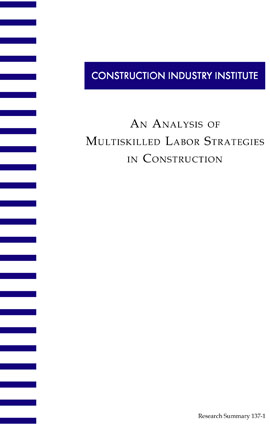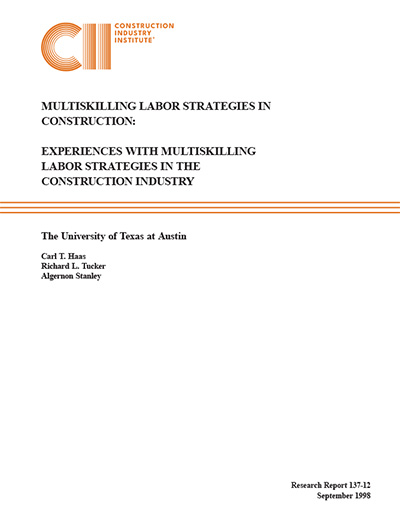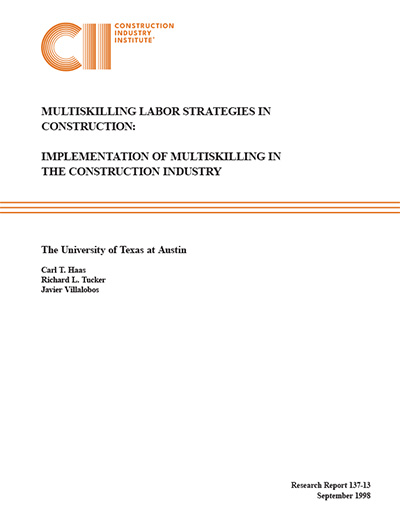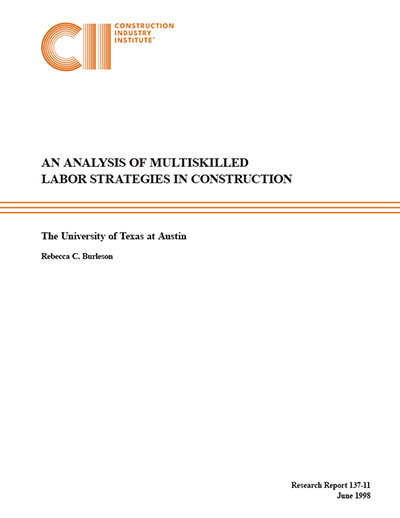
An Analysis of Multiskilled Labor Strategies in Construction
Labor productivity, craft training, and the declining number of entrants into construction crafts present critical challenges for our industry today. One solution which may positively effect many labor issues is to better utilize the skilled workers currently in the industry through the development and use of multiskilling. A review of studies over a 10-year period from the manufacturing area indicates that multiskilling strategies resulted in process improvements and technological innovation.
The scope of this study included a detailed project analysis of a single domestic, grass roots, open shop industrial construction project and the exploration of currently used multiskilling applications in construction. Benefits of multiskilled labor utilization were demonstrated with regard to total project labor cost, employment opportunities for construction craft workers, and other industry labor issues. These benefits included conservative estimates of five percent total labor cost savings, a 35 percent reduction in required project work force, a 47 percent increase in average employment duration of each worker, and an increase in wage/annual earning potential for multiskilled construction workers.
A system for estimating the potential project benefits of alternative labor utilization strategies was developed. All labor cost factors in the cost model were identified and developed by the industry research team. The cost model is used in conjunction with labor data from the project schedule to quantify the potential cost savings from a multiskilled labor strategy.
(RS137-1, p. 12)



